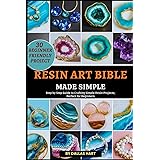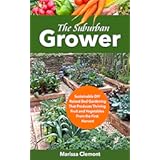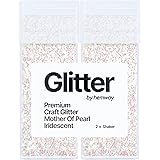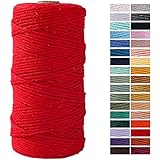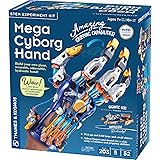Mastering Efficient Household Cleaning: Expert DIY Protocols
The pursuit of an impeccably maintained home often demands innovative, time-saving solutions. The accompanying video offers a concise visual compendium of various efficient household cleaning strategies. These methodologies, while presented with rapid execution, underscore the efficacy of readily available components.
From routine upkeep to specific challenging scenarios, a broad spectrum of techniques is observed. Achieving optimal results is predicated upon a foundational understanding of ingredient properties. This necessitates a shift from merely applying agents to comprehending their chemical interactions. Expert execution of these DIY cleaning protocols invariably enhances domestic environments.
Foundational Principles of Natural Cleaning Agents
The application of natural substances is frequently employed in sustainable home management. Lemon juice, a common household staple, is recognized for its potent citric acid content. This organic acid functions as a mild bleach, effectively breaking down stains and imparting a refreshing aroma. Its antimicrobial properties are also well-documented in various applications.
Conversely, distilled white vinegar, an acetic acid solution, is celebrated for its versatile cleaning capabilities. Mineral deposits, grease, and grime are readily dissolved by its acidic nature. However, caution is advised; vinegar’s acidity can be detrimental to certain surfaces, particularly natural stone. Alcohol, specifically isopropyl alcohol or vodka, acts as an excellent solvent and disinfectant. Its quick evaporation ensures streak-free finishes on many surfaces.
Dr. Bronner’s soap, a highly concentrated castile soap, represents a biodegradable option for diverse cleaning tasks. It is typically diluted significantly before application. Proper dilution ratios are paramount for its effective and safe utilization. These natural agents, when understood, become powerful tools for efficient household cleaning.
Strategic Odor Mitigation and Disinfection Methods
Unpleasant odors necessitate targeted interventions, moving beyond simple masking. Vodka, a neutral spirit, functions as an exceptional odor neutralizer. Its alcohol content evaporates swiftly, carrying away odor-causing compounds without leaving a scent. Blended with essential oils, a synergistic effect is achieved, addressing malodors while infusing pleasant fragrances.
Disinfection protocols are critical for maintaining hygienic spaces. A mixture of water, vinegar, and thyme offers a natural alternative to harsh chemical disinfectants. Thyme contains thymol, a powerful natural antiseptic. This combination is effective against many common pathogens when allowed sufficient contact time.
Baking soda, chemically known as sodium bicarbonate, is a versatile agent for both odor absorption and gentle abrasion. Its amphoteric nature allows it to neutralize both acidic and alkaline odors. Borax, a naturally occurring mineral salt, is another potent cleaning booster and deodorizer. When combined with other agents and allowed to sit for approximately two hours, as suggested, its efficacy in deep cleaning is significant. Nevertheless, borax should be handled with appropriate care.
Advanced Surface Restoration and Problem-Solving Techniques
Specific challenges within a household often demand specialized solutions. WD-40, an industrial lubricant, is surprisingly effective in refreshing certain plastic surfaces. Its formulation can penetrate and revitalize faded or scuffed plastics. However, its application should always be tested on an inconspicuous area first.
Baby powder, with its highly absorbent talc or cornstarch base, is frequently employed for spot removal and odor absorption. Oil stains on fabrics, for instance, are often ameliorated by its ability to soak up greasy residues. Similarly, its deodorizing properties are exploited in various household contexts. Its gentle nature makes it suitable for delicate surfaces where harsher chemicals are unsuitable.
Stubborn grime on kitchenware, like a dirty cookie sheet, can be addressed through chemical reaction. A mixture of baking soda and vinegar, when applied and allowed to react for five minutes, effectively loosens baked-on residues. The effervescence generated aids in lifting debris. For scuffed walls, unconventional methods such as gentle abrasion with a tennis ball or baking soda paste are often found to be highly effective. These techniques often bypass the need for repainting.
Optimizing Drain and Appliance Maintenance
Maintaining clear drains and efficient appliances is a cornerstone of efficient household cleaning. A clogged toilet, a common domestic nuisance, can sometimes be alleviated through physical manipulation aided by plastic film. The creation of a temporary seal and subsequent flushing generates pressure, dislodging obstructions. This method effectively transforms the toilet into a powerful plunger.
For kitchen drains, a mixture of soda (sodium carbonate or washing soda), vinegar, and hot water offers a robust solution. The chemical reaction between the soda and vinegar, coupled with the hot water, helps to dissolve grease and organic matter. This should typically be allowed to sit for 10 minutes, facilitating thorough clearing. Regular maintenance with such mixtures can prevent severe blockages, prolonging plumbing longevity.
Grease and oil stains on surfaces, such as stove tops or countertops, are often effectively treated with a mixture of soda and cooking oil. When left for approximately five minutes, this combination helps to emulsify the grease. This allows for easier removal. The principles of chemistry are leveraged here to simplify what might otherwise be a challenging cleaning task.
Comprehensive Fabric and Upholstery Care Protocols
Soft furnishings and fabrics, being highly absorbent, accumulate dust, skin cells, and odors over time. A simple yet highly effective way to clean a mattress involves widespread application of baking soda. The mattress is first vacuumed, then a generous layer of baking soda is evenly spread. This is left for an extended period, typically 24 hours, to fully absorb moisture, odors, dead skin cells, and dust mites. Subsequently, the mattress is carefully vacuumed. This method significantly refreshes the sleeping surface, contributing to a healthier home environment.
Cleaning rugs and other soft furniture requires a specific concoction. A solution comprising one glass of warm boiled water, one tablespoon of baking soda, one tablespoon of washing powder, and four to five tablespoons of 9% table vinegar is highly recommended. The soft furniture is first vacuumed to remove loose debris. The mixture is then sprayed onto the fabric. After approximately 10 seconds, the liquid, along with embedded dirt, is removed using a clean sponge. However, a crucial caveat must be observed: this powerful mixture should not be utilized on natural fabrics. Such materials may react adversely, leading to damage or discoloration. Always perform a patch test on an inconspicuous area to prevent unintended consequences.
For dirty sofas, a mixture of water, alcohol, table vinegar, and fabric softener provides a robust cleaning agent. The alcohol aids in dissolving oils and disinfecting, while vinegar tackles odors and minor stains. Fabric softener helps to recondition the fibers, leaving the sofa feeling fresh. Proper ventilation is essential during this process. Each component contributes to an overall enhanced state of cleanliness and comfort.
Sustainable Practices in Household Management
Beyond immediate cleaning solutions, efficient household cleaning embraces sustainability. Recycling old towels, rather than discarding them, exemplifies this principle. These absorbent materials are repurposed into cleaning cloths, rags, or even mop heads. This practice reduces waste while providing a continuous supply of utility cloths. The economic and ecological benefits are substantial, aligning with broader environmental stewardship. Such simple adaptations underscore a commitment to responsible resource utilization, central to efficient household cleaning.


